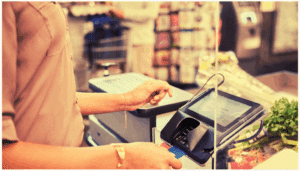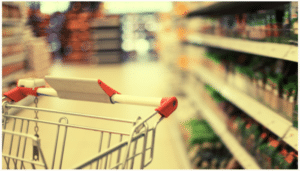Competitive Intelligence: Commodity or Business Driver?
Reading Time: 12 Minutes
Speculation of ongoing inflation and supply chain uncertainty in categories from coffee to catnip are leading retailers to search for profit protection and customer satisfaction by out-pricing, out-promoting, and out-merchandising the competition.
But most retailers are under-equipped to create or activate a competitive strategy to meet their objectives, largely because retailers treat competitive intelligence like a commodity instead of a business driver…
The Critical Role of Retail Competitive Intelligence
Every price move, promotional activity, and assortment decision carries consequences. Competitors are moving fast. Consumers are reshaping their behavior. That’s why retail competitive intelligence is no longer optional – it’s a critical input for every decision that impacts margin, market share, and customer trust.
Competitive intelligence provides the visibility retailers need to understand where they stand in the market from a price, promotion, assortment, and availability outlook. It enables you to move from reactive to proactive: identify risks before they erode profitability, spot opportunities before your competition does. Whether it’s understanding own brands vs. national brands, fine-tuning your omnichannel competitor list by region, or adjusting promotions, the smartest retailers are the ones who know the market (beyond their own shelves).
And while retail competitive intelligence is a critical element to business, too many retailers keep it disconnected from the broader business strategy. The real power of the data comes when it’s integrated – powering merchandising, pricing, and category managers with data that is reliable, accurate, and ready for action.
ClearDemand’s approach to competitive intelligence goes beyond raw data. We offer retailers a solution that is built to scale, built for speed, and built around the unique realities of modern retail. It’s not about collecting more data, it’s about using the data to make the right decisions.
Why Retail Competitive Data has Become a Commodity
Few would argue that a comprehensive view of the market is important to inform and protect pricing, promotion, positioning, and merchandising/assortment decision making.
However, gaining access to reliable and high-quality competitive intelligence data has proven to be expensive and resource heavy. The result: Retailers question whether the investment is worth the return.
Retailers take actions with their competitive data strategy that leaves any intelligence gained as a “nice to have”:
Quantity Over Quality
Action: Some retailers have simply lost faith for data providers to deliver consistent, high-quality market intelligence. Because of this, some companies have become data collectors… ingesting as much data – for the lowest cost – then reconciling and cleansing it themselves.
Outcome: More data does not equal better actions.
In fact, retailers that take this quantity-over-quality approach find that the investment needed for people to make the data ready for analysis far outweighs the investment in quality data collection and harmonization.
Teams often ignore competitive data when it doesn’t align with a clear business need. And by the time they access it, the insights are already outdated.
Applying Old Practices to a New World
Action: Today’s retail reality has opened opportunities for you to act more dynamically, own a customer experience outside of the store, and know more about the market than ever before. However, many retailers still think in static, reactionary ways by limiting their intelligence to a few products and a few competitors, collected less often. You might need to rethink operating by sending someone into a store – to of the strategic direction of getting the information to make the best decisions.
Outcome: Unnecessary sacrifices.
Retailers collected only the limited data they could afford, since sending someone into a physical store was costly. This type of thinking doesn’t work in today’s world where prices, merchandising, availability, and promotions can change by the hour.
You should prioritize competitive data based on your growth strategy — not just on your ability to do more with less.
Elevating Competitive Intelligence Into a Business Driver
Take look at the annual reports of leading brands and retailers.
There are few without some promise or goal about digital transformation and data advancement.
Why? Because data-driven is a non-negotiable in the digital commerce world we operate in.
As data-driven has become a necessity, data cannot be treated like a commodity.
Let’s think about data and analytics differently.
- Start with the business outcomes you’re looking to drive
- Prioritize quality, actionability and visibility
- Limit manual resources instead of limiting market scope
- Work with a partner to define what’s possible and how data works with existing practices
- Identify “need to have” information and map a path to scale – new competitors, new channels, new frequencies, etc.
- Share the plan and outcomes cross-functionally
The Future of Retail Competitive Intelligence
The future of competitive intelligence is proactive, precise, and deeply integrated into retail operations.
As the pace of change accelerates – with prices, promotions, and availability shifting by the hour – retailers will need more than just visibility. They’ll need AI-powered systems that can detect patterns, recommend actions, and drive decisions in real time. Static dashboards and weekly reports won’t cut it. The next era of comp intel will be defined by pricing analytics, automated workflows and rules management, and elasticity.
Retailers that win will shift from collecting data to operationalizing it. That means embedding competitive intelligence directly into pricing, promotional, and assortment strategies. The goal is no longer just to see the market. It’s to act on it faster, smarter, and more profitably than the competition.
It’s true that retailers have more data from more places to them available than ever before. While this should result in a greater ability to compete at both a global and granular level, the difficulty to operationalize competitive data to keep up with the dynamic, multi-channel environment has disconnected the intelligence from the data.
It will be collaboration between data providers and strategic retailers that reposition competitive intelligence from commodity to business driver to meet the ever-changing needs of consumers, navigate pricing and supply chain disruption and compete profitably regardless of changes in the future.
At ClearDemand, we’re building toward that future. With patented data collection, intelligent product matching, and integration-ready insights, we empower retailers to not just keep up — but to lead.
Because in tomorrow’s market, competitive intelligence won’t be a report. It’ll be a competitive advantage in motion.
The Latest Insights – Straight to Your Inbox
Sign up for the ClearDemand mailing list for actionable strategies, upcoming events, industry trends, and company news.













